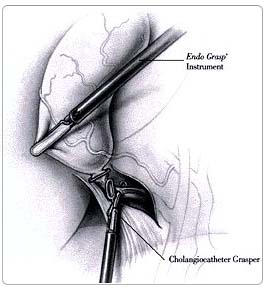What is it?
You are having difficulty getting pregnant. In order for you to be able to get pregnant, your ovaries that produce the eggs must be healthy and the same applies to the Fallopian tubes that allow the eggs to travel from your ovaries to the womb where they can get fertilised. Since you have problems getting pregnant, there may be a blockage in the Fallopian tubes or damage around the ovaries. The ovaries may not be quite right. The surgeon needs to look inside your tummy and pelvis (the lower part of your abdomen where your womb, tubes and ovaries are placed) to identify the problem. The doctor injects some dye up the cervix into the womb.
He can see if the dye flows along the Fallopian tubes and around the ovaries. He may see other things that are making pregnancy difficult. He is mainly seeing and testing, but sometimes he can deal with minor problems during the operation. Unblocking the tubes usually means a bigger operation later. If you need special treatment to get pregnant later, the surgeon needs to know if the tubes are blocked or not at this stage.
The Operation
You will have a general anaesthetic and be completely asleep. A small cut is made in the skin just below your tummy button. A narrow telescope called a laparoscope is passed through the tummy wall, and your tummy is inflated with some carbon dioxide gas. This gives the surgeon a good view of the inside of your pelvis. He may also pass other instruments into the tummy through one or two other cuts.

These will help him to get a better view. He passes a fine instrument through the vagina and into the womb. Then he injects dye up the instrument into the womb. The laparoscope is used to see if the dye comes out of the Fallopian tubes near the ovaries. Finally, a stitch is put into each skin wound. The operation usually takes about 20 minutes. It can often be done as a day case. This means you come into hospital on the day of the operation and go home the same day.
Any Alternatives
If you leave things as they are, you may get pregnant. But not if there is a blockage, The surgeon may not be able to find something simple and easy to fix, if you do not have the test. Drugs and medicines will not help at this stage. Doing the dye test with X-rays instead of an operation is not as reliable.
Before the operation
Stop smoking and get your weight down if you are overweight. (See Healthy Living). If you know that you have problems with your blood pressure, your heart, or your lungs, ask your family doctor to check that these are under control. Check the hospital's advice about taking the Pill or hormone replacement therapy (HRT). Check you have a relative or friend who can come with you to the hospital, take you home, and look after you for the first week after the operation. Sort out any tablets, medicines, inhalers that you are using. Keep them in their original boxes and packets. Bring them to hospital with you. On the ward, you may be checked for past illnesses and may have special tests, to make sure that you are well prepared and that you can have the operation as safely as possible.. Tell the doctors and nurses of any allergies to tablets, medicines or dressings. You will have the operation explained to you and will be asked to fill in an operation consent form. Many hospitals now run special preadmission clinics, where you visit for an hour or two, a few weeks or so before the operation for these checks.
After - In Hospital
You will have a sanitary pad in place. You may have some discomfort in the tummy and shoulders caused by the gas inside the tummy. Tell the nurse if this is troubling you. You can be given an injection to help. After this, mild painkillers such as aspirin or paracetamol should be all you need. After three or four hours on the ward, you should feel fit enough to go home. You should be prepared to stay overnight, in case you are still uncomfortable at the end of the day. A general anaesthetic will make you slow, clumsy and forgetful for about 24 hours. The nurses will help you with everything you need until you are able to do things for yourself. Do not make important decisions, drive a car, use machinery, or even boil a kettle during that time. You will be given a Follow Up Appointment for two weeks or so, and a note will be sent to your General Practitioner. The hospital will have the results for you when you go to the Out Patients Department. Some hospitals leave check-ups to the General Practitioner. The nurses will advise about sick notes, certificates etc.
After - At Home
Make sure you are going home by car with your relative or friend. At home, go to bed and rest for at least six hours. Sometimes there may be some bruising in the tummy, but this will settle after a week or so. Take the dressing off the wound while in the bath or shower after three days. You can shower and bath but try to keep the area of the wound(s) for a week. The hospital will arrange for the stitch to be taken out. There may be slight bleeding from the vagina, like the end of a period. It will last for a few days. Only use external pads for any loss. Do not use tampons. You can usually go back to normal activity and work after a week. Avoid heavy exercise for a week. You can have sex after your next natural period if you feel comfortable enough.
Possible Complications
As with any operation under general anaesthetic there is a very small risk for complications related to your heart or you lungs. The tests that you will have before the operation will make sure that you can have the operation in the safest possible way and will bring the risk for such complications very close to zero.
All operations have some risks. However, laparoscopy is a very common and relatively safe operation. Complications occur in 1-2% of cases. Very rarely bleeding can happen during the operation. Even more rarely, the bowel can be damaged by the instruments. In either case, the surgeon can deal with the problem straight away through a bigger wound. Sometimes, there is some infection in the tummy button area after the operation. This settles down with antibiotics.
Finally, very rarely, you can develop an allergic reaction to the dye. The anaesthetist will ask you before the operation for any allergic reactions that you had in the past to establish whether you have an increased risk for such reactions. Even if you have not had similar problems in the past you can still have a reaction to the dye and the anaesthetist will give you medications to control it.
Advanced Reproductive Technology
- In Vitro Fertilisation (IVF)
- Intracytoplasmic Sperm Injection (ICSI)
- Donor egg and embryo programs
- In Vitro Fertilisation (IVF)
- Pre-implantation genetic diagnosis (PGD)
- Surrogacy programs
Dental Videos





